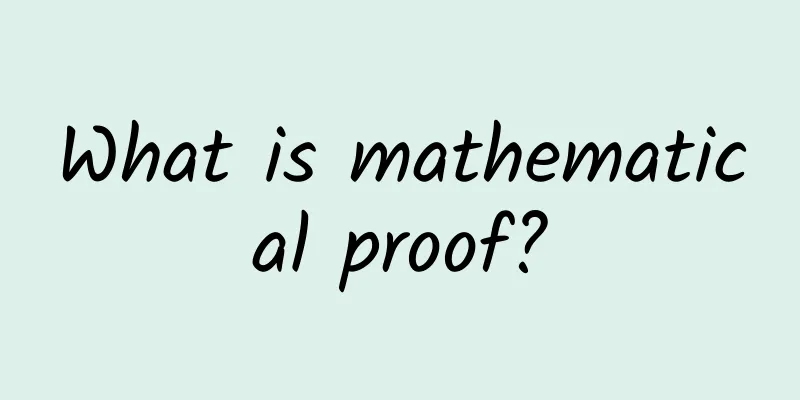Do you need to remove wisdom teeth? Not necessarily! | Expo Daily

|
Do you need to remove wisdom teeth? Not necessarily! Wisdom teeth are often considered "extra" teeth because they usually erupt in late adulthood and seem to have no obvious effect on chewing and pronunciation. However, are wisdom teeth really useless? And how should we treat them? Wisdom teeth, also known as third molars, usually erupt between the ages of 16 and 24. They are the outermost teeth on both sides of the upper and lower jaw alveoli. Some people may have less than four, and about 30% of people never erupt. Wisdom teeth may cause problems such as bad breath and toothache. Due to the degeneration of the alveolar bone in modern humans, wisdom teeth often lack sufficient space for eruption, resulting in ectopic eruption or impaction. This makes it easy for food residues to accumulate and difficult to clean, resulting in bad breath, and may cause pericoronitis, periodontitis, pulpitis, etc., leading to toothache. However, not all wisdom teeth need to be removed. If the wisdom teeth grow in the normal position and direction and can bite normally, they do not need to be removed. Wisdom teeth usually do not play a substantial role in pronunciation and chewing due to their late eruption and often impaction. However, this does not mean that they have no function at all. Wisdom teeth are really useful: they are substitutes for tooth replacement. If you accidentally break a molar when chewing a pig's trotter, if this tooth is just before the wisdom tooth, the wisdom tooth can serve as a potential "base tooth" to provide a place for the denture to hang. Of course, you can also pull it over and use it directly. You can also pull it out and plant it to replace other broken molars. But the premise is that the wisdom tooth must grow straight. Image source: pexels We Chinese still have to grow vegetables on the moon~ We have previously said that because lunar soil does not contain any organic nutrients and is very dry, it is not suitable for growing vegetables. Seeing this conclusion made me feel that the sky was dark, but a turning point has come... We must first know that phosphorus is essential for plant growth, but the form of phosphorus in lunar soil is a problem that has always been difficult for plants to absorb. However, the research team led by Sun Zhencai, an associate professor at China Agricultural University, took advantage of the fact that the physical and chemical properties of volcanic eruptions are very similar to those of real lunar soil and prepared a simulated material with a similar element content to the real lunar soil. Among five carefully selected bacteria commonly found in Earth's soil, it was found that a combination of three common bacteria on Earth, Bacillus megaterium, and Pseudomonas fluorescens, can increase the concentration of plant-available phosphorus in lunar soil simulant, thereby improving the fertility of lunar soil and promoting plant growth on the moon. In just 10 to 21 days, the phosphorus content available to plants in the lunar soil simulants treated with these three bacteria doubled! The chlorophyll content of the plants treated with bacteria was 104% higher than that of the plants in the control simulants without bacteria. This significant increase strongly proves the positive role of bacterial treatment in promoting plant growth. As the research progresses, the team plans to conduct experiments on model plants such as Arabidopsis and tobacco, and gradually expand to more challenging crops such as potatoes. The research was published in Communications Biology, a journal under the international journal Nature. Image source: pexels A murder caused by a watermelon. How to avoid buying green eggs? Are the melon-eating crowd ready? It’s the season for eating melons again. Have you studied how to choose melons? First, don't choose watermelons with dried vines (fruit stalks), which means the watermelon has been picked a long time ago. Although watermelons can be stored for a long time, they are still in danger of spoiling if they are stored for too long. "The vines that are curled are sweet, but if they are straight, don't eat them." This is not true. The main structure of the vine is the vascular bundle, which is resilient and can be straight or curved, and can deliver the same amount of carbohydrates to the watermelon. Does the smaller the circle on the bottom of a watermelon, the better it tastes? Not true. The circle on the bottom of a watermelon is the mark left after the corolla falls off, and has no direct relationship with the sugar content. At the same time, the quality of a watermelon has no direct relationship with its weight. Tapping watermelons is an old secret, and this tapping experiment is the most scientific and non-destructive way to test the ripeness of watermelons. In the early stages of fruit development, the cellulose in the watermelon flesh is relatively developed. When the fruit matures, the cellulose in the watermelon fruit is degraded by the action of cellulase, and some cells even break away from the cellulose network and become scattered cells, which is why ripe watermelons have a "sandy" taste. This morphological change will affect the change in continuous vibration when tapped. That is to say, as the watermelon matures, the frequency of vibration gradually decreases, and the sound produced by knocking becomes duller and duller. It seems that those watermelons with slightly crisp sounds are mostly unripe watermelons, while those with slightly dull sounds indicate that the watermelon is ripe. I'm a science popularizer, how can I let you buy a green hand? Image source: veer gallery “Decision-making difficulty” strikes again? Otherwise, I'll give you a song. “Give you a hundred dollars now” and “Give you a thousand dollars in two weeks (or even longer)”, which one would you choose? This is actually "intertemporal choice" in psychology, which is the decision-making process when people face different benefits in the immediate and future. We often know that long-term choices are more advantageous, but we tend to be short-sighted and tend to be satisfied immediately. The psychological mechanism behind this is called time discounting. Researchers from the Institute of Psychology of the Chinese Academy of Sciences and the School of Music of Shanghai Normal University collaborated to explore how music affects intertemporal choice. In the study, volunteers performed an intertemporal choice experiment while listening to music with different emotions - happy (fast, major), sad (slow, minor), and white noise. In the experiment, the researchers found that this effect is related to the arousal caused by music, rather than the pleasure. The speed of music is the key to affecting emotional arousal and time perception. Therefore, the researchers eliminated the influence of pleasure by changing the tune of the music but keeping the speed. Fast music increases the level of excitement, making people feel that the future is further away and more inclined to give up future gains; slow music reduces the level of excitement, making people feel that time passes faster and more willing to wait for future gains. This study is the first to reveal the connection between time perception, decision-making and music, indicating that music affects decision-making behavior by changing our perception of time . When faced with immediate and future choices, we tend to simplify the decision-making process, reduce the sense of time distance, reduce the impact of time discounting, and make intertemporal choices more direct. South Korea announced the establishment of its own NASA! South Korea is determined to join the ranks of global space powers and has formally established a new agency to oversee this work. South Korea's first space exploration mission is the Korea Pathfinder Lunar Orbiter (KPLO), which carries five scientific instruments to collect data on the moon's weathering, magnetic field and permanently shadowed craters. The mission was launched in August 2022 by a SpaceX Falcon 9 rocket and has achieved initial success. As a result, the country has decided to further develop its own space exploration program independently. To this end, the South Korean government announced the establishment of the Korea Aerospace Administration (KASA) based on the structure and model of the National Aeronautics and Space Administration (NASA) of the United States, and hired John Lee, a Korean-American who had served as a senior executive at NASA for nearly 30 years, as deputy director of the Korea Space Agency in charge of missions and research and development. KASA's primary responsibility is to build the country's commercial launch and satellite capabilities. But the government also tasks the agency with landing a spacecraft on the moon by 2032 and on Mars by 2045, and promoting the development of cutting-edge science. The Korea Space Safety Agency unifies space programs that were previously scattered across government departments under one roof. Its creation fulfills a campaign promise made by South Korean President Yoon Seok-yeol, who takes office in May 2022. South Korean officials believe a more robust space program will boost economic growth, and government plans call for doubling spending on space-related programs to 1.5 trillion won ($1.1 billion) in the five years from 2022 to 2027. Most of those funds would go toward developing rockets, satellites and other technologies with commercial applications. But the National Space Council's plan also calls for KASA to promote "leading space science research that will contribute to the expansion of human knowledge." This year, about 6% of South Korea's space budget, or about $45 million, will go to science and exploration. According to currently available information, South Korea's aerospace exploration team is studying the feasibility of placing a satellite at the Sun-Earth Lagrange point L4 to monitor solar activity. L4 is a "parking point" where the gravitational pulls from the Sun and Earth are delicately balanced, allowing the satellite to maintain a constant position relative to the Earth and Sun. Observations from this vantage point can detect solar activity. South Korea may also have another lunar orbiter as a follow-up to KPLO. Researchers at the Korea Aerospace Research Institute are already envisioning a planned lunar lander that could carry a rover and several scientific payloads. South Korean officials declared that the KASA mission "will be carried out under the premise of international cooperation" and expressed the hope that South Korea will one day carry out space missions that can produce world-class scientific results. The content is compiled from China Science Expo Weibo, China Agricultural University, Science Popularization China, and Science Academy This article was first published on China Science Expo (kepubolan). Please indicate the source of the public account for reprinting |
<<: Could climate change thousands of years ago have changed the direction of the ancient Silk Road?
>>: Who can sing bel canto, do parkour and take care of children in the zoo?
Recommend
U.S. sales fell in the first four months, and automakers will stop production and reduce inventory
According to foreign media reports, American auto...
How to find cooperation channels with anchors who sell products?
How to find cooperation channels with anchors who...
How to buy delicious watermelon in summer? Find out →
Did you know? 70% of the world's watermelons ...
Is there a "Liu Genghong girl" injured? Doctors remind...
"Have you worked out with Liu Genghong today...
How to design a popular H5? 5 tips to make you a master!
It’s time to learn more. A few days ago, an H5 ad...
The Hunger Games of Internet TV: LeTV’s Suspension
Once any business model touches upon policy restr...
2020 Zero-cost Money-Making Strategy, Easily Earn 200+ Every Day
The online money-making project I shared today, a...
Once again, turn on this function on your phone, it can save lives at critical moments →
At present, earthquake relief work in Gansu and Q...
If JAC Volkswagen’s first SUV is an iEV7S with a different shell, would you still buy it?
Ever since the establishment of the JAC Volkswage...
How do you evaluate Jiang Xiaobai’s marketing style?
The heart-wrenching copywriting creativity only s...
Juyongguan: How did ancient China “play” with light-speed communication and cryptography
Juyongguan is known as the most powerful pass in ...
Don’t ignore “visibility” when promoting product fission
Whether it is an Internet product or a consumer p...
How to expand the storage space of iPhone 6?
It has been more than half a year since the iPhon...
How to choose the promotion channel for APP?
After the APP is launched, promoting the product ...
Haobo HT orders exceeded 30,000! "Door Factory Haobo" made a strong debut at the Guangzhou Auto Show
On November 17, the 2023 Guangzhou International ...









